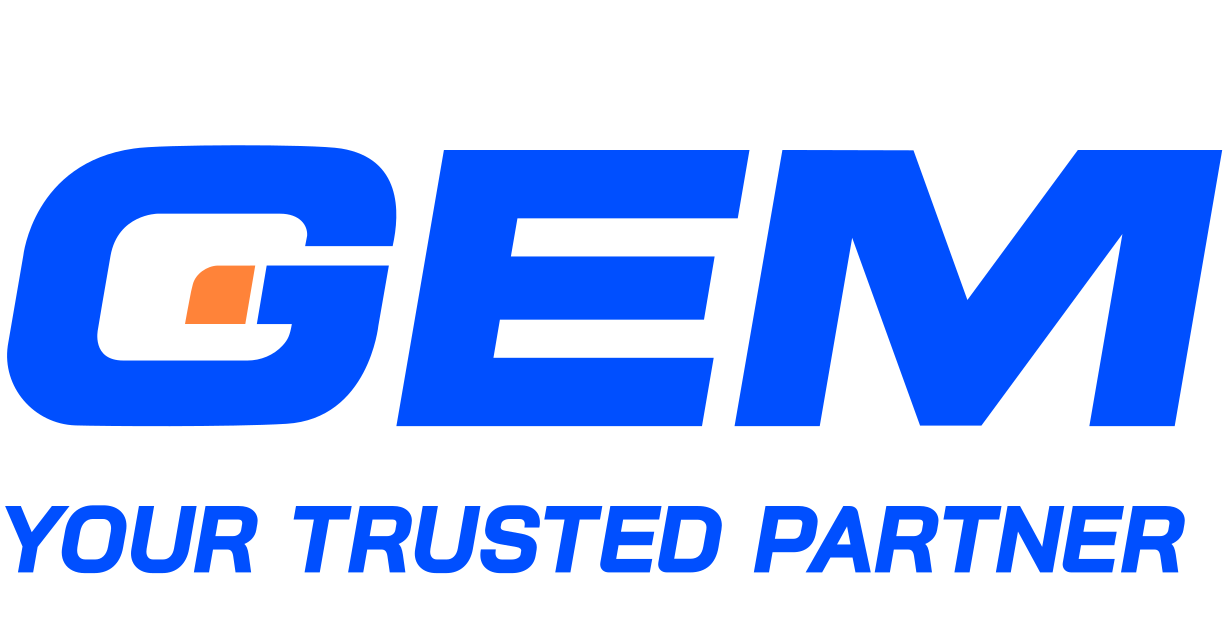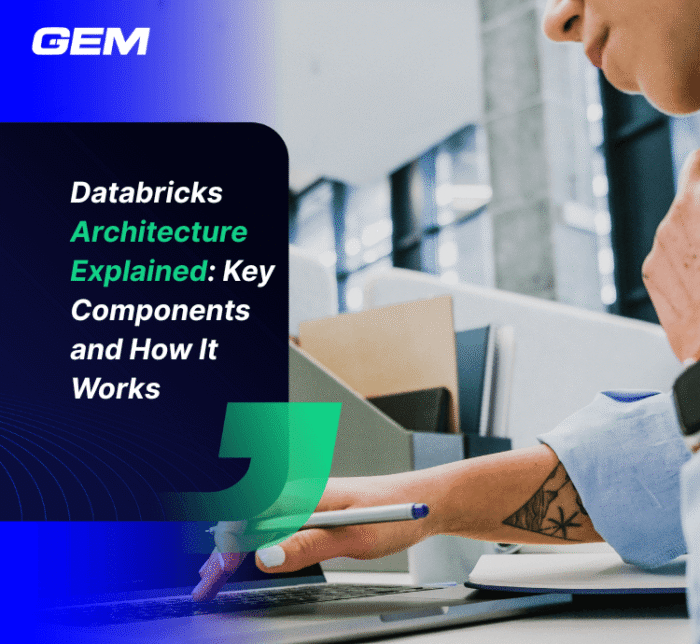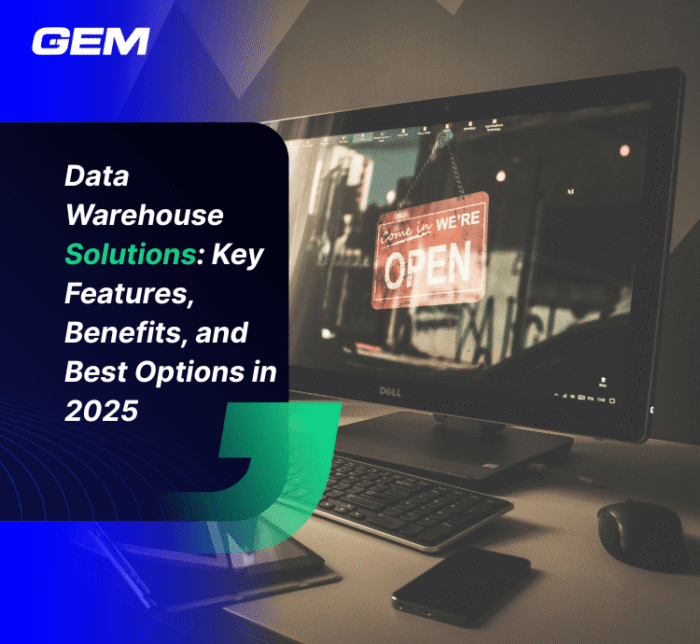Contents
- What is an IT Support Services Provider?
- Core Capabilities of IT Support Providers
- Business Value of Partnering with an IT Support Service Provider
- Criteria for Selecting a Professional IT Support Services Provider
- Pricing Models and Engagement Structures When Working with an IT Support Provider
- GEM Corporation – Your Reliable IT Support Service Provider
- Conclusion
Choosing the right IT support services provider can shape how efficiently your business operates, adapts, and scales over time. With dozens of options and service models in the market, it’s important to understand what capabilities matter, how providers structure their offerings, and what signals to look for during evaluation. This article outlines the key services these providers deliver, the business value they bring, and practical criteria to help you make an informed decision. We’ll also cover pricing models and common pitfalls to avoid when selecting a long-term partner. Let’s look at what defines a strong IT support services provider.
What is an IT Support Services Provider?

An IT support services provider, commonly known as a Managed Service Provider (MSP), is an external partner responsible for overseeing and maintaining a company’s IT systems. These firms manage a range of operations, including system monitoring, cybersecurity, cloud services, disaster recovery planning, and help desk support. The objective is to keep technology environments secure, stable, and responsive to business needs. Providers can range from global consultancies like Accenture and IBM to more focused firms such as Dataprise and CMIT Solutions, offering tailored support models based on the size and complexity of the organization.
Core Capabilities of IT Support Providers

IT support services providers offer a broad set of capabilities designed to keep business systems stable, secure, and operational. While offerings vary, most include the following core areas:
Proactive Monitoring and Maintenance
Continuous system monitoring to detect anomalies, apply security patches, and carry out preventive maintenance across servers, endpoints, and network infrastructure.
Cybersecurity
Threat detection and defense strategies spanning firewall configuration, endpoint protection, intrusion prevention systems, and 24/7 security monitoring. Many providers also offer vulnerability assessments and penetration testing.
Cloud Management
Support for public, private, or hybrid cloud environments, including workload migration, resource provisioning, system configuration, and cost tracking.
Disaster Recovery & Business Continuity
Development of recovery protocols, automated backups, and infrastructure redundancy to ensure data persistence and minimal downtime during disruptions.
End-User Support
Service desk support for employees to resolve technical issues, manage access rights, and troubleshoot hardware or software problems across devices and platforms.
Infrastructure Management
Ongoing oversight of IT infrastructure components – servers, storage, switches, applications, to keep systems aligned with business performance and uptime expectations.
Technology Consulting
Advisory services to guide digital transformation, compliance planning, and infrastructure modernization. This may include vendor selection, architecture design, and IT budgeting.
Automation and IT Workflow Integration
Implementation of tools that automate recurring IT tasks, such as patch deployment, system alerts, or ticket routing, to improve operational efficiency.
Compliance and Data Governance Support
Assistance with aligning IT systems to regulatory requirements (e.g., HIPAA, GDPR, SOC 2), including audit preparation, data management policies, and reporting frameworks.
Business Value of Partnering with an IT Support Service Provider

Working with a professional IT support services provider introduces stability, scalability, and strategic clarity to how technology is managed across the business. The benefits go beyond issue resolution, providing both operational and long-term value.
Operational Focus
Outsourcing day-to-day IT responsibilities reduces the workload on internal teams, allowing departments to shift attention toward product development, customer engagement, or market expansion. This separation creates clearer ownership between operational technology and strategic growth initiatives.
Cost Efficiency
Outsourced IT partnerships give companies access to specialized expertise, enterprise-grade tools, and 24/7 support, without the financial commitment of building a large internal team. Predictable pricing models and on-demand access to advanced capabilities help keep technology budgets under control.
System Reliability
Managed service providers proactively monitor infrastructure, apply updates, and fix issues before they escalate. This leads to fewer outages, faster resolution times, and improved uptime across systems that support daily operations.
Security Posture
With an increasing number of cyber risks targeting mid-size and enterprise environments, providers bring structured defense strategies including endpoint protection, vulnerability scanning, and incident response. Their ability to stay current with evolving threats strengthens your organization’s overall risk management approach.
Scalable Support
As business needs evolve, whether through growth, seasonal demand, or operational shifts, IT support providers can scale services accordingly. This flexibility is especially valuable for companies navigating expansion, hybrid work models, or new digital channels.
Regulatory Alignment
Many industries face strict compliance obligations tied to data privacy, cybersecurity, and reporting. A qualified provider brings experience in frameworks like HIPAA, GDPR, and SOC 2, helping clients prepare for audits and maintain compliant IT environments.
Criteria for Selecting a Professional IT Support Services Provider

Choosing an IT support provider involves more than comparing service catalogs. The right partner should align with your business model, growth plans, and risk profile. These criteria can guide the selection process:
Industry Experience
Providers familiar with your sector bring contextual knowledge that reduces onboarding time and improves service relevance. They understand the software ecosystems, compliance requirements, and operational pressures typical of your industry.
Service Level Agreements (SLAs)
Strong SLAs define what response times, uptime targets, and escalation procedures you can expect. Look for clear metrics tied to availability, issue resolution, and communication, especially for mission-critical systems.
Security Capabilities
Assess whether the provider offers proactive security measures, such as real-time threat monitoring, patch management, and breach response protocols. Ask for examples of how they’ve handled ransomware, phishing, or other common risks in similar environments.
Scalability
Your IT partner should be able to support your business as it grows or diversifies. Whether expanding to new locations or adding cloud-based services, the provider’s infrastructure and staffing model should be equipped to scale without friction.
Tooling & Automation
Modern providers use automation platforms for system monitoring, ticketing, asset tracking, and reporting. These tools improve transparency and free up resources by streamlining repetitive tasks, which improves overall service delivery.
Client Support Model
Evaluate how support is delivered, whether through a centralized help desk, dedicated account manager, or on-site personnel. Availability outside standard business hours, along with a clear escalation path, can be the difference in high-impact scenarios.
Explore more: Top ITO countries
Pricing Models and Engagement Structures When Working with an IT Support Provider

Understanding how IT support services are priced is a key step in selecting the right provider. The cost structure not only affects your budget but also defines how services are delivered and scaled over time.
Fixed-Fee Pricing
In this model, the provider offers a flat monthly or annual rate in exchange for a predefined scope of services. It’s commonly used for managed service contracts where the provider takes full responsibility for maintaining systems, handling support, and delivering routine maintenance. Fixed-fee agreements are often structured around service tiers or bundled packages.
Typically included:
– 24/7 monitoring
– Help desk support
– Patch management
– Regular reporting
– Basic cybersecurity tools
Common exclusions:
– Project-based work (e.g., system upgrades, cloud migrations)
– Advanced security services (e.g., threat hunting, penetration testing)
– Support for non-standard software or legacy systems
– On-site support, unless specified
This model is favored by businesses looking for predictability in IT spending, but it requires a clear definition of service boundaries to avoid misalignment in expectations.
Usage-Based Pricing
Also known as pay-as-you-go, this structure charges based on actual consumption of services. Costs may be tied to support hours used, number of tickets resolved, data volume processed, or cloud resource usage.
Best suited for:
– Organizations with fluctuating or seasonal IT needs
– Companies testing a new provider before entering a long-term contract
Watch for:
– Spikes in cost during high-demand periods
– Limited visibility into how usage is measured
– Minimal incentive for the provider to proactively resolve recurring issues
Usage-based pricing can offer flexibility, but it often lacks the strategic alignment found in fixed contracts.
Per-User or Per-Device Pricing

This model charges a set fee for each user or device supported under the contract. It’s widely used for endpoint-focused support, such as employee laptops, desktops, and mobile devices.
Common inclusions:
– Help desk access for supported devices
– Antivirus and patching
– Email and user account management
Limitations:
– May not cover shared infrastructure (servers, network equipment)
– Additional charges for offboarding/onboarding new users
– Device caps or surcharges for high-end hardware
This model makes budgeting simpler for growing teams but should be reviewed as team size or device complexity increases.
Hidden Costs to Watch For
Even with a clear pricing model, some costs are often excluded from upfront quotes. These can materially affect total cost of ownership over time.
Onboarding and Transition Fees
Initial setup, system audits, or documentation transfer can carry one-time charges. Some providers bundle it into the first invoice, while others treat it as a separate project.
After-Hours Support
Support outside of standard business hours may come with premium rates, especially if not covered in your SLA. This includes weekends, holidays, or emergency response.
Third-Party Software and Licensing
Costs related to antivirus, backup solutions, or cloud management tools may be passed through or marked up by the provider.
Service Overages
If you exceed agreed-upon thresholds, such as number of tickets, hours of support, or data usage, penalty fees may apply.
Project Work
Initiatives like server upgrades, application rollouts, or compliance audits are often scoped and billed separately from ongoing support.
When assessing proposals, request a detailed breakdown of what’s included, what’s billable, and how service changes are handled mid-contract. A transparent pricing model, paired with a flexible engagement structure, can align the provider’s efforts with your operational and financial goals.
GEM Corporation – Your Reliable IT Support Service Provider

GEM Corporation is a global IT service provider with over a decade of experience delivering digital solutions across key markets such as Japan, ANZ, Asia, the EU, and the US. Backed by a team of 400+ technology professionals, GEM has completed more than 300 projects spanning multiple industries. The company’s capabilities are supported by a broad technology stack and industry-standard certifications, positioning it as a trusted partner for enterprise clients seeking scalable and secure IT delivery. GEM’s track record reflects a commitment to quality, cross-border collaboration, and long-term client success.
GEM’s IT support services are designed to help businesses maintain performance, security, and resilience across their technology environments. Offerings include 24/7 managed services, cloud infrastructure support, and comprehensive testing, from functional and security testing to end-to-end application validation. Clients benefit from automation-first strategies, proactive issue management, and a service model tailored to their operational needs.
Conclusion
Choosing an IT support services provider involves technical capabilities and also alignment across operations, cost structure, scalability, and compliance. The right partner helps simplify internal workloads, stabilize systems, and strengthen digital operations through clear service models and reliable execution. Evaluating providers through service scope, security practices, and industry fit helps reduce risk and improve continuity. To explore how GEM can support your technology strategy with structured IT services, get in touch with our team.






